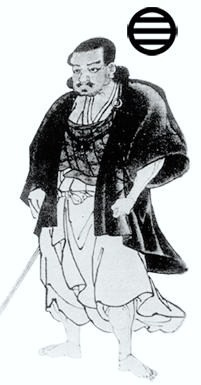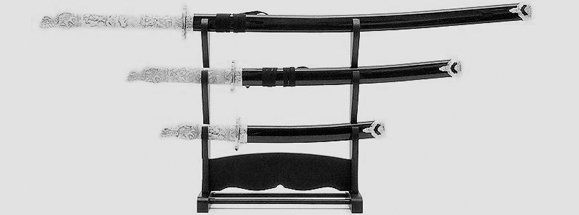
Best swords stay in their scabbard :
Hence the first thing you learn at the NBSII Battojutsu/Iaido/kenjutsu dojo is to cut your own ego, The Most revered amongst all weapons is the sword and Mugairyu is the martial art of mastering this mystical weapon, the martial art it self has survived centuries of war and several generations of samurai, the Mugai ryu Iaido Nichiryu Kai India is the only authentic school of Nichiryukai(Swordsmanship) in India, with Mehul Vora being a 17th generation swordsman of Mugai ryu and the sole licensed teacher to teach the same in India.
Mugairyu Sinnden Kamitin (essence and Spirit of Mugairyu) Written over 250 years ago by the founder Tusji Gettan Sukemochi
- Mugai Ryu is different from others.
- There are life and death in each single motion
- Win or lose how it looks is not important
- Essence of Mugairyu is only by the years and years of hard practice
- There are no solid methods of the sword
- Sword and Zen are same
- Only years and years of practice make you understand the truth in the Ken (Sword)
- MU means Nothing
- Gai Means Other
- People who have a great interest in Bujutsu endure domestic peace
- An excellent Blade and its proper use Depends on its user
History
Mugairyu is unique since it falls under Baattojutsu-Iai and Kenjutsu schools of swordsmanship,
Mugai Ryu Iai was founded by Tsuji Gettan Sukemochi of the Omi province. He was born in 1649 and started studying Kenjutsu with Yamaguchi Bokushinsai at the age of 13. He later received Menkyo Kaiden and opened a Dojo in Edo (Tokyo) when he was 26. Apart from his studies of Kenjutsu he also studied Zen and classical Chinese literature as a disciple of Master Sekitan Zenshi. When he was 45 years of age (1694) he experienced "Satori" ("enlightenment") and named his school "Mugai Ryu" after a sequence in a poem by his master where the word "Mugai" is found. He never married or had children of his own, but adopted a boy (Tsuji Kimata Sukehide) who later became the second Soke of Mugai Ryu Iai Heido. The founder died in 1728 at 79 years of age. Gettan had many students (probably more than 1100) and counted among them several Daimyo including: Ogasawara Sadonokami Nagashige, the lord of Himeji castle, Sakai Kageyu Tadaki, and the governor of Tosa province, Yamanouchi Toyomasa. Today, three main lines of Mugai Ryu exist: Edo, Tosa and Himeji.
Although there are only few similarities between Muso Jikiden Eishin Ryu and Gettan's Mugai Ryu, his lineage can be traced back to Hayashizaki Jinsuke Shigenobu through Jikyo Ryu and Tamiya Ryu. The lineage from Hayashizaki Jinsuke is as follows: Tamiya Heibei Shigemasa (2nd soke of Muso Ryu and founder of Tamiya Ryu) - Miwa Gempei - Yamamoto Matabei - Asahina Mudo - Wada Heisuke Masakatsu (Founder of Shin Tamiya Ryu) - Taga Jikyoken Morimasa (Founder of Jikyo Ryu) - Tsuji Gettan Sukemochi.
Characteristic moves of Mugai Ryu include: Drawing and cutting in the form of Kiri-Age, stabbing where the cutting edge is turned up and with one hand on the hilt and one hand supporting the blade closer to Kissaki, one-handed stabs to the rear. The movements tend to be relatively small and compact, especially the seated techniques. Beyond Kihon Kata, the techniques are divided into five groups: Go-Yo (5), Go-Ka (5), Tachiwaza Go-O (5), Hashiri Gakari (5) and Naiden (3). Other techniques have been added by the 14th and 15th Soke. The Naiden group is considered to be the "okuden" level and is said to represent the ideal of "Fusatsu no Toho" ("non-killing sword"). This level is not taught until one has received the Menkyo level certificate. Mugai Ryu also has Kumitachi techniques where one is facing a partner. There are five Kata for the long sword and five Kata for the short sword (Wakizashi).
Kazo Inoue Shihan has been designated 13th Soke, and he will carry on the tradition of Mugai Ryu Iai Heido Nichiryukai all over the world, Nichiryu meaning Japanese Dragon being the warrior name of Shihan Inoe.
Soshihan Mehul Vora is a 14th Generation swordsman of Nichiryukai and a personal student of Shihan Kazo Inue 8th dan since 2003
- Mugai Ryu Heido Nichiryu Kai (Genealogy)
- Hayashizaki Jinsuke Shigenobu (Shinmyomusoryu)
- Tamiya Heibewazamasa (Tamiya Ryu)
- Miwa Genbe (Mito Han)
- Yamamoto Matabe (Mito Han)
- Asahina Mudokantai (Miti Han)
- Wada Heisuke Masakatu (Shin Tamiya Ryu Mito Han)
- Taga Jikyoken Morimasa (Jikyo Ryu, Edo)
- Tsuji Gettan Sukemochi (Mugai Ryu, Edo)
- Tuji Kimata Sukehide, (Edo)
- Tuji Bunzaemon Sukeken, (Edo)
- Tuji Kimarta Sukeyuki, (Edo)
- Tuji Kimata Shigeyuki, (Edo)
- Takahashi Yasuke, (Himeji Han)
- Takahashi Tatuzou, (Himeji Han)
- Takahashi Yasuke Nariyuki, (Himeji Han)
- Takahashi Tetuo Takenari, (Himeji Han)
- Takahashi Kyotaro Koun (Dai Nippon Butokukai Kendo Hanshi)
- Nakagawa Shinichi Shiryu ( Iaido Judan Hanshi)
- Ishi Zenzo Gogetu (Expelled, Showa 35/4/28)
- Nakatani Omishi Gakuryu ( Iaido Judan Hanshi)
- Inoue Kazo Nichiryu Iaido Hachi Dan
|



